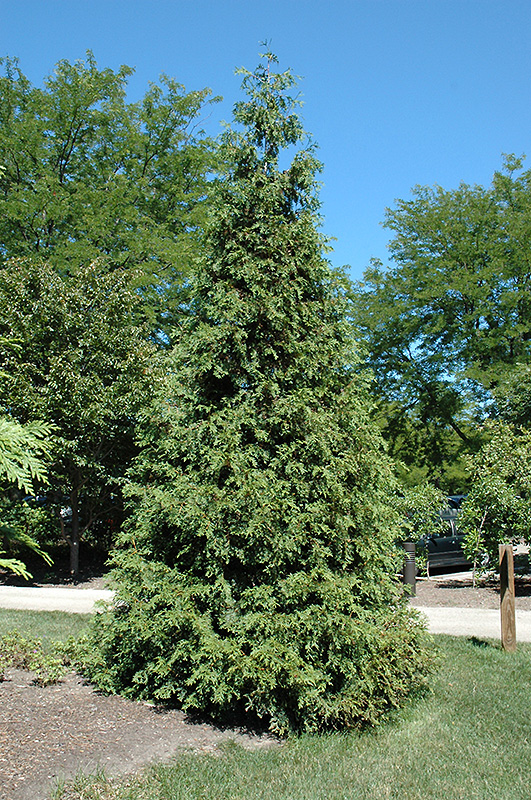Atrovirens Arborvitae*
Thuja plicata 'Atrovirens'
* This is a "special order" plant - contact store for details
Height: 25 feet
Spread: 8 feet
Sunlight:
![]()
![]()
Hardiness Zone: 4b
Other Names: Giant Arborvitae, Western Red Cedar
Description:
One of the finest large pyramidal evergreens for home landscape use, with excellent glossy dark-green foliage that off-colors slightly in winter; a very hardy selection, makes a great tall evergreen hedge, takes pruning exceptionally well
Ornamental Features
Atrovirens Arborvitae is primarily valued in the landscape for its distinctively pyramidal habit of growth. It has forest green evergreen foliage. The glossy scale-like sprays of foliage remain forest green throughout the winter. The shaggy antique red bark adds an interesting dimension to the landscape.
Landscape Attributes
Atrovirens Arborvitae is an evergreen tree with a distinctive and refined pyramidal form. Its relatively fine texture sets it apart from other landscape plants with less refined foliage.
This is a relatively low maintenance tree. When pruning is necessary, it is recommended to only trim back the new growth of the current season, other than to remove any dieback. It has no significant negative characteristics.
Atrovirens Arborvitae is recommended for the following landscape applications;
- Vertical Accent
- Hedges/Screening
Planting & Growing
Atrovirens Arborvitae will grow to be about 25 feet tall at maturity, with a spread of 8 feet. It has a low canopy, and is suitable for planting under power lines. It grows at a slow rate, and under ideal conditions can be expected to live for 80 years or more.
This tree does best in full sun to partial shade. It is quite adaptable, prefering to grow in average to wet conditions, and will even tolerate some standing water. It is not particular as to soil type or pH. It is somewhat tolerant of urban pollution, and will benefit from being planted in a relatively sheltered location. Consider applying a thick mulch around the root zone in winter to protect it in exposed locations or colder microclimates. This is a selection of a native North American species.
* This is a "special order" plant - contact store for details

